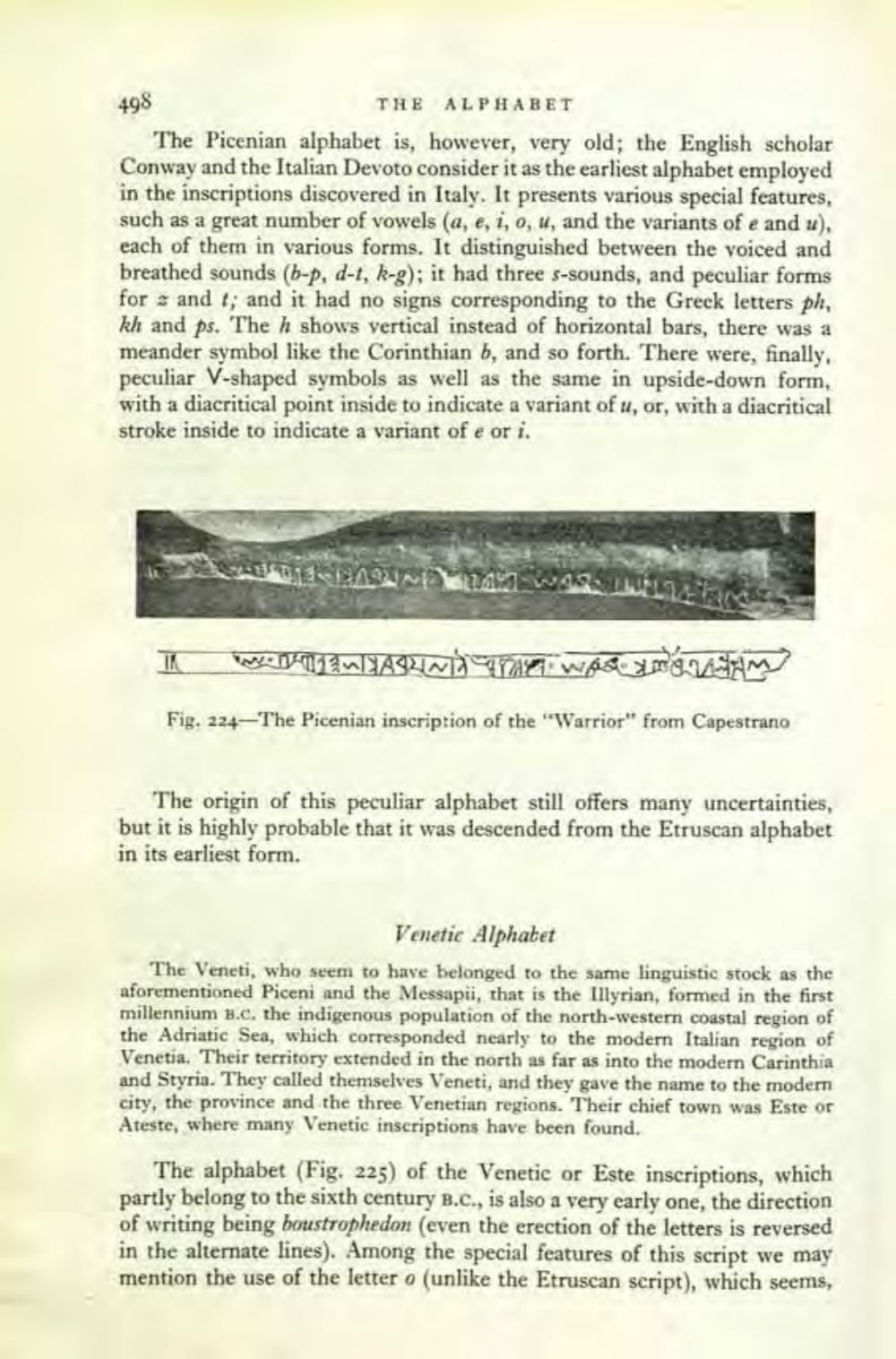________________
498
THE ALPHABET
The Picenian alphabet is, however, very old; the English scholar Conway and the Italian Devoto consider it as the earliest alphabet employed in the inscriptions discovered in Italy. It presents various special features, such as a great number of vowels (a, e, i, o, u, and the variants of e and u), each of them in various forms. It distinguished between the voiced and breathed sounds (b-p, d-t, k-g); it had three s-sounds, and peculiar forms for and t; and it had no signs corresponding to the Greek letters ph, kh and ps. The h shows vertical instead of horizontal bars, there was a meander symbol like the Corinthian b, and so forth. There were, finally, peculiar V-shaped symbols as well as the same in upside-down form, with a diacritical point inside to indicate a variant of u, or, with a diacritical stroke inside to indicate a variant of e or i.
ཤྩ འད ༣ དཀཀ ལ
WRK
EAST was en
Fig. 224-The Picenian inscription of the "Warrior" from Capestrano
The origin of this peculiar alphabet still offers many uncertainties, but it is highly probable that it was descended from the Etruscan alphabet in its earliest form.
Venetic Alphabet
The Veneti, who seem to have belonged to the same linguistic stock as the aforementioned Piceni and the Messapii, that is the Illyrian, formed in the first millennium B.c. the indigenous population of the north-western coastal region of the Adriatic Sea, which corresponded nearly to the modern Italian region of Venetia. Their territory extended in the north as far as into the modern Carinthia and Styria. They called themselves Veneti, and they gave the name to the modern city, the province and the three Venetian regions. Their chief town was Este or Ateste, where many Venetic inscriptions have been found.
The alphabet (Fig. 225) of the Venetic or Este inscriptions, which partly belong to the sixth century B.C., is also a very early one, the direction of writing being boustrophedon (even the erection of the letters is reversed in the alternate lines). Among the special features of this script we may mention the use of the letter o (unlike the Etruscan script), which seems,




